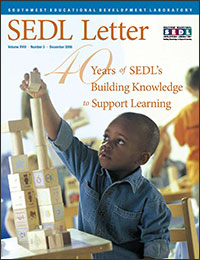The 1970s: Scaling Up, Scaling Down
"No child fails. Schools may fail to provide a supportive environment, teachers may fail to communicate what they know, materials may fail to help the child learn. But no child fails."
— SEDL annual report, 1973
President Richard M. Nixon’s administration ushered in the 1970s. Nixon rejected much of the Great Society emphasis on the social function of schools and programs to meet the needs of disadvantaged groups, focusing instead on state and local control. Although the change in administration brought more uncertainties for federal support of education, SEDL began the decade on a high note, emerging as one of only four institutions that received federal facility construction funds in 1970. SEDL’s new building included television and media production facilities, an early childhood learning center with an audio-visual control booth for taping model lessons, and a state-of-the-art IBM System 3 computer that ran IBM's Report Program Generator (RPG) and Fortran programming languages.

Leading the Way
By June 1971, SEDL had 264 employees. Most were based at the Austin headquarters; others were located in Baton Rouge or in field sites across the region. SEDL began working with a San Antonio television station to produce Los Niños, a Sesame Street-type weekly bilingual television program for Spanish-speaking preschool children and their parents that was picked up by a number of other stations across the Southwest. With funding from the Texas Education Agency, SEDL also began testing parent involvement and parent education activities in communities in east and south Texas.
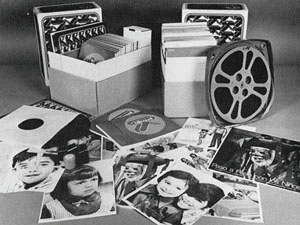
By 1973 SEDL had fully developed and tested an integrated set of curriculum products for both English and Spanish speakers aged 3–8. Under the Follow Through Program, SEDL developed a bilingual, bicultural model and tested it in sites in Texas, Louisiana, Pennsylvania, and California. The migrant program was also nationally significant. Migrant program staff were working with school districts and day care centers in Texas and other states to provide preservice and inservice training and to adapt materials that would meet the needs of migrant children.
To publish and distribute its curriculum products, SEDL set up its own publishing company in 1973. National Educational Laboratory Publishers Inc. (NELP) was established as a private, for-profit subsidiary of the organization. When several SEDL products were officially approved by the State of Texas’s textbook adoption committee, business picked up considerably.
Dr. James H. Perry: A Patient Second Administrator
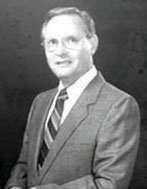 Dr. James Perry became SEDL’s second chief executive officer in June 1971. A member of the original prospectus-writing committee, he came to SEDL from Louisiana State University. Dr. Perry’s challenge was not to create but to survive, and he was to be tested to the limit. By 1979, with funding opportunities severely curtailed, SEDL was much reduced in staff size and scope of work. Dr. Perry led a comprehensive reorganization of SEDL’s programs and signed agreements with the National Institute of Education that would ensure institutional funding through 1984. With SEDL’s immediate security guaranteed, he resigned in November 1981.
Dr. James Perry became SEDL’s second chief executive officer in June 1971. A member of the original prospectus-writing committee, he came to SEDL from Louisiana State University. Dr. Perry’s challenge was not to create but to survive, and he was to be tested to the limit. By 1979, with funding opportunities severely curtailed, SEDL was much reduced in staff size and scope of work. Dr. Perry led a comprehensive reorganization of SEDL’s programs and signed agreements with the National Institute of Education that would ensure institutional funding through 1984. With SEDL’s immediate security guaranteed, he resigned in November 1981.
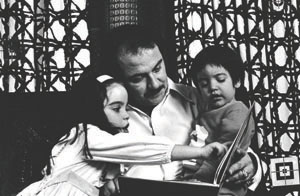 SEDL’s outstanding work in curriculum development was about to be curtailed, however. Federal curriculum development initiatives began receiving a great deal of criticism by the mid to late 70s. Critics, including many publishers who believed the government was undermining their development efforts, argued this was not an appropriate role for the federal government. In 1977, Congress decided it would no longer fund full-scale curriculum development through the ESEA.
SEDL’s outstanding work in curriculum development was about to be curtailed, however. Federal curriculum development initiatives began receiving a great deal of criticism by the mid to late 70s. Critics, including many publishers who believed the government was undermining their development efforts, argued this was not an appropriate role for the federal government. In 1977, Congress decided it would no longer fund full-scale curriculum development through the ESEA.
Though the regional laboratory program managed to survive this and other political shifts during the 1970s, the work was scaled back significantly, and only eight of the original 20 labs survived the decade. SEDL was one of them, with a reorganized region encompassing six states—Arkansas, Louisiana, Mississippi, New Mexico, Oklahoma, and Texas—and a revised agenda that focused heavily on field research, training, and technical assistance.
That 1970s Look and Feel
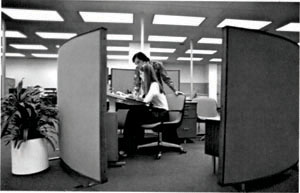 In September 1973, SEDL moved into its new facility at 211 E. 7th Street in downtown Austin, Texas. Designed by Brooks, Barr, Graeber, and White, the Southwest Tower was the first office condominium arrangement in Austin. SEDL’s offices within the building were designed by the Quickborner Team (named for its members’ home community, Quickborn, Germany). The team used an office landscape concept, designed to be ergonomically correct and structured to support the way SEDL staff worked and communicated. It incorporated flexibility and openness by using colorful, moveable modular pieces and planters to delineate office space. The design, cutting edge at the time, remains memorable in the minds of SEDL employees who lived with it until 1999, when the office space was renovated.
In September 1973, SEDL moved into its new facility at 211 E. 7th Street in downtown Austin, Texas. Designed by Brooks, Barr, Graeber, and White, the Southwest Tower was the first office condominium arrangement in Austin. SEDL’s offices within the building were designed by the Quickborner Team (named for its members’ home community, Quickborn, Germany). The team used an office landscape concept, designed to be ergonomically correct and structured to support the way SEDL staff worked and communicated. It incorporated flexibility and openness by using colorful, moveable modular pieces and planters to delineate office space. The design, cutting edge at the time, remains memorable in the minds of SEDL employees who lived with it until 1999, when the office space was renovated.
Next Article: The 1980s: A Decade of Rebuilding
